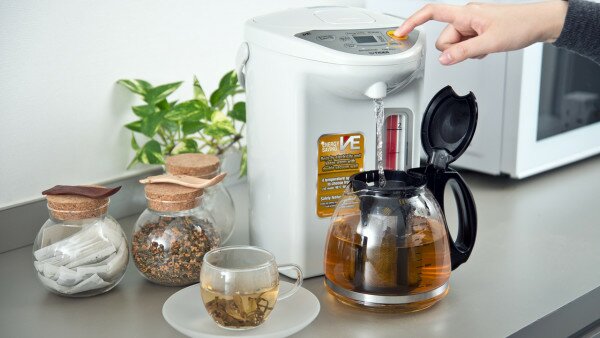As winter is just around the corner, many families opt to use electric hot water pots to make a handy mug of hot drink to drive the cold away. Although convenient, electric hot water pots need to have power supply all the time, causing electricity fee be as high as $630 a year which is higher than the annual electricity tariff for a "1 horse-power" inverter type air conditioner. If the most energy efficient sample with vacuum warmth-keeping design is chosen for use, the electricity cost could be reduced to one third. Additionally, 2 electric pot models are found to be unable to boil water to full temperature of 100°C.
The Consumer Council and the Electrical and Mechanical Services Department conducted a joint test on 11 electric hot water pot models. Among them, 8 models were regular hot water pots priced from $258 to $798, while the remaining 3 claimed to have vacuum insulation technology sold at prices between $1,098 and $2,298.
The test has found that power consumption of standby mode in models claimed to have equipped with vacuum insulation technology performed better than the regular models. The former consume energy of 0.48kWh to 0.67kWh, while the latter could consume as much as 0.86kWh to 1.44 kWh for keeping water warm for 24 hours after boiling. When calculating on the basis of $1.2 per kWh, electricity cost for the model consuming the most energy on standby mode could reach $630 a year; power consumption and electricity cost for the most energy efficient model with vacuum design is only a third of that. Electricity cost for a "1 horse-power" inverter type air conditioner under specific operating conditions (operates12 hours per day for 180 days a year), is only a bit over $500 a year.
Electric hot water pots need to be powered to maintain the water at certain temperature, therefore its energy consumption is relatively high. Therefore, if consumers are not a frequent hot water user, they should switch it off or unplug it, or even consider using other appliances such as electric kettles which can boil water quickly.
The test also discovered that among the 11 models, 2 models failed to boil water to 100°C and the highest temperatures they could achieve were only 97.3°C and 97.8°C respectively. In terms of time required for heating, all models needed approximately 7 to 9.5 minutes in average to bring 1 litre water to boil.
When water dropped to the lowest level, 1 model could not drain hot water from its electric pump; another 2 models could only pump out 10 and 40 ml water. If consumers wish to use up all the hot water, they must drain the pots manually.
Moreover, only 2 models whose capacities were higher than they claimed, whereas the remaining 9 models did not measure up to their claimed capacity. The model with the biggest discrepancy of 22% has an actual capacity of only 3.9 litre, much lower than 5 litre capacity it claims. It also had a rather huge discrepancy between its measured input power (668W) and rated power (800W) which is 16.5% less.
On the safety front, 8 models successfully passed all safety tests, but 1 model's earthing screw failed to secure after 10 times of loosening and tightening repeatedly which would increase the risk of electric shock. 2 models missed specific warning statements in the instruction manual, such as avoid water flowing into the power supply inlet.
3 assessors rated the smell emitted by the tested models during boiling, as well as the taste of warm boiled water and cool boiled water. All models are found to emit an odour of plastic when they are used for the first time. The odour of plastic is even more apparent in cool boiled water of some models, some assessors were even reluctant to taste the cool boiled water from 1 model. Consumer should wash the inside of the pot or have a trial run first before using the electric hot water pots.
There are other advice for purchasing or using electric hot water pots:
- If there are young children at home, consider choosing the model with safety lock. Keep the pot locked at all time to prevent hot water from pumping out accidentally;
- Electric hot water pots should be placed on a stable surface close to a socket outlet in the kitchen to avoid toppling;
- Electric hot water pots should be used with an independent socket outlet due to its high power consumption. Unplug them to save energy if they are not in use;
- Do not heat up any liquid other than water in the electric hot water pots;
- Do not place hands, arms and faces above the steam outlet to avoid getting scalded by the steam;
- Wash electric hot water pots periodically and make sure to switch off power supply and unplug them before washing.
The Consumer Council reserves all its right (including copyright) in respect of CHOICE magazine and Online CHOICE.




